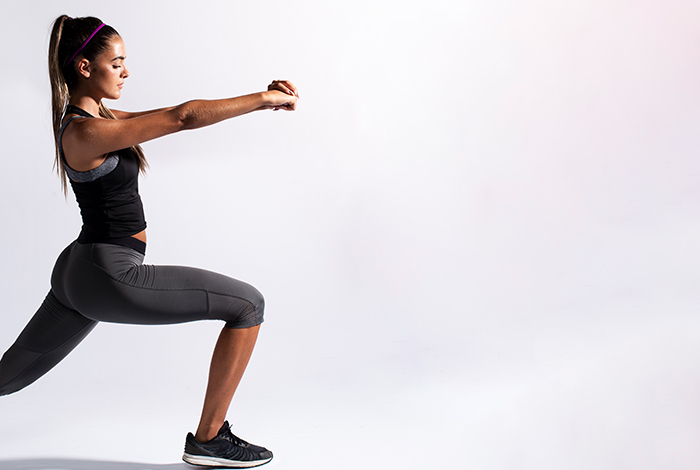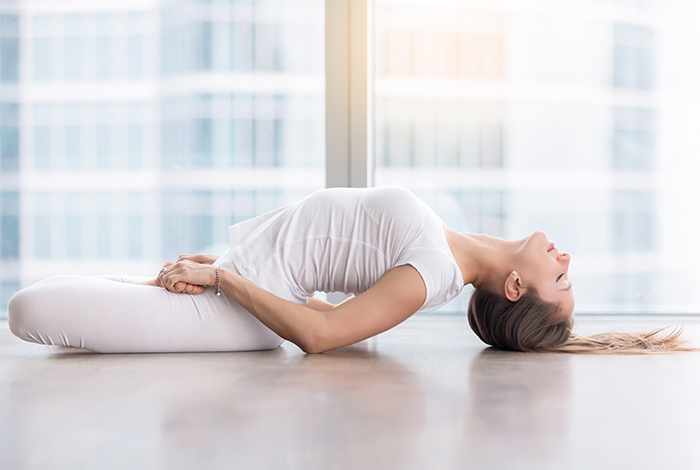Sukhasana is a very popular posture associated with almost every yoga practice at some point or another. It is sometimes called Easy Seat, Decent Pose/Pleasant Pose.
Irrespective of what you can call it, the posture is a perfect alternative to full lotus poses and is an amazing place to rest for the breathing exercises, meditation and intention setting.
This posture has a number of benefits depending on what to combine with, but Sukhasana has many health benefits all of its own. Here are a few.
-
Find tranquility and stillness

Eliminate anxiety by practicing this pose as a calmant during all kinds of practice, or simply when life becomes challenging. Add in a refreshing breathing technique or repeat a unique mantra that fits your specific situation and you would have a wonderful meditation practice going on.
-
Stretch the external aspect of knees

This crisscross seat involves open knees, which could be an area of tightness for several people, particularly if you are engage in a fair amount or sit at desk for a long period of time each day.
-
Open the ankles

This posture opens the ankle slowly but definitely. You know you have the tight ankles if the child’s pose is a little painful for your ankle or if you feel some strain on your ankle joints when you sit with your legs crossed.
Try to sit on a cushion or block for taking some of the stress out of ankles when they open. With time, you will find your ankles begin to open out and this will allow you to sit a little more deeply.
-
Promote grounded-ness

Inhaling to reach the chest up to the sky and exhaling to go through the sitting bones in this shape would help you feel more grounded and very less stressed out.
-
Unlock the hips

To open the hips, sit in the given posture for 5 to 10 minutes daily, moving the feet a little over half way to even out stretch capacity. In case your hips are tight, place block under your knee and gradually decrease the height of the blocks to let gravity to drop your hip open for you.
-
Lengthen back muscles and spine

Sitting up in a tall posture and spreading the collar bone apart to lift your heart would overall encourage better posture. Anchor properly your seat to press hard the spine open and broaden the low back muscle.
If you have a history with a severe back or knee injury, sit over with a folded blanket or use a bolster so that the knees are lower than your hip and the strain will then be removed. You can also try using a wall to lean back or see if it feels better so that you can lean slightly forward.
In most eastern cultures, sitting on floor in this new manner is expected at commonplace, thus the hips, back and ankles are used to it. In our culture, this type of seated position can be more challenging. It is also believed that the many great benefits of Sukhasana are found exponential for all tight-hipped individuals.
How to sit in Sukhasana position?
Interestingly, you may try the posture even while sitting on the dining table. To start with, you need to follow the routine as mentioned below:
Week 1. Sit in sukhasana when you are sitting on dining table.
Always try to do this once every day.
Week 2. Change the position of cross of leg.
Week 3. Eat a meal of the day when you sit on the floor.
Week 4. Change the position of cross of your leg when you eat sitting on floor.
Steps to practice Sukhasana
- Sit straight with legs stretched out in front of body.
- Bend left leg and place left foot under right thigh.
- Similarly, bend right leg and then place right foot under left thigh.
- Rest outer edge of your leg on the floor.
- Adjust body and legs to get comfortable in one pose.
- The head, spine and neck must be erect
- Place palms on knees or thighs.
- Keep shoulder relaxed and elbow a bit bent.
- Close the eyes and relax whole body, take slow deep breaths.
- Feel every breath moving out of the body.
- Practice for one minute or less in case you feel discomfort.
- Practice twice by changing the position of the legs.
